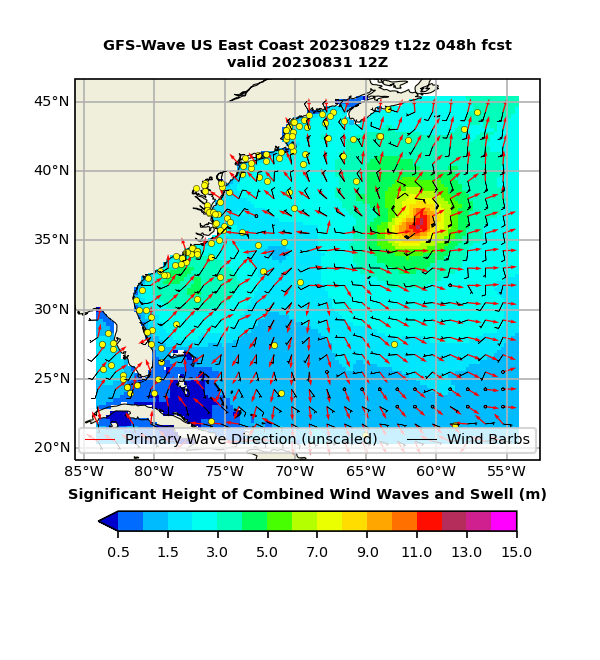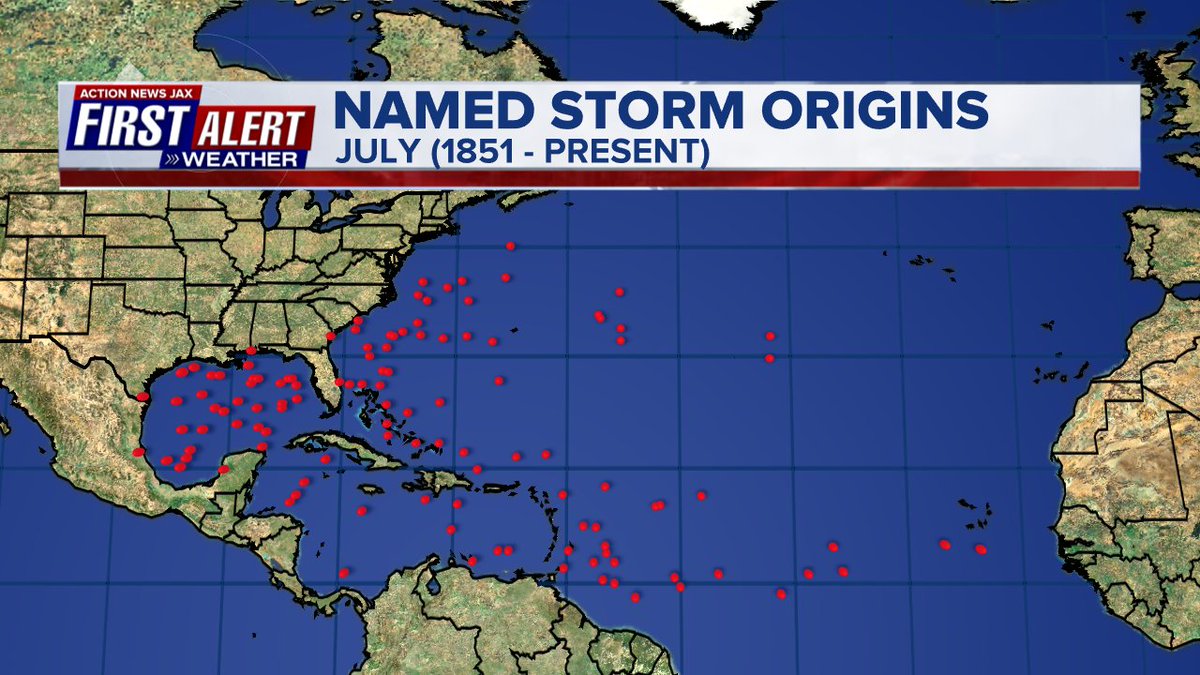Jacksonville, Fl. — The “Buresh Bottom Line”: Always be prepared!.....First Alert Hurricane Survival Guide... City of Jacksonville Preparedness Guide... Georgia Hurricane Guide.
STAY INFORMED: Get the * FREE * First Alert Weather app
FREE NEWS UPDATES, ALERTS: Action News Jax app for Apple | For Android
WATCH “Preparing for the Storm”
WATCH “The Ins & Outs of Hurricane Season”
READ the First Alert Hurricane Center “Survival Guide”
LISTEN & WATCH “Surviving the Storm” - WOKV Radio & Action News Jax
***** ALWAYS CHECK & RE-CHECK THE LATEST FORECAST & UPDATES! *****
REMEMBER WHEN A TROPICAL STORM OR HURRICANE IS APPROACHING: Taping windows is *NOT* helpful & will not keep glass from breaking.
Realize the forecast cone (”cone of uncertainty”) is the average forecast error over a given time - out to 5 days - & *does not* indicate the width of the storm &/or damage that might occur.
*** No impacts from tropical systems for Jacksonville/NE Fl./SE Ga. through the holiday weekend into next week...
* The active tropical wave - ‘94-L’ (Potential Tropical Cyclone #2) which came off the coast of Africa a week ago Wed. finally formed into tropical storm “Bonnie” Fri. morning & made landfall near the Nicaragua/Costa Rica border Fri. night as a formidable tropical storm with the tropical cyclone becoming well developed & strengthening while moving ashore. The persistent upper level high remains intact across the Atlantic & U.S. (Lower 48) which means a continued rather straight forward forecast track (due west) across Central America then into the East Pacific while veering more northwest with time off the coasts of San Salvador, Guatemala & Mexico. Once to the Pacific, the system should quickly re-organize & strengthen again likely becoming a hurricane.
There will be no impacts on NE Fl./SE Ga. ... or any of Florida... as well as not any of the Gulf Coast. It is worth noting early season African waves like from which Bonnie was born are often a harbinger of an overall active Atlantic hurricane season.



* A weak upper level low developed persistent convection Thu. night/Fri. to the east of Jacksonville with a surface low evolving not too far from Savannah by midday Fri. which is now moving slowly northeast with the low passing just about right over Charleston near & early Saturday. If the low can manage to get over water intact, there may be some further development. In any case, heavy rain & gusty winds will affect the Eastern Carolina’s into Saturday. There is some westerly shear so much of the heavier convection has trended near & east of the low’s center.




* A tropical wave continues to move into the Eastern Caribbean & is steadily moving W/NW. There has been a burst of convection to the east of the wave axis but shear is strong over the Caribbean & should keep this wave from having much of a chance to appreciably develop. Still - something to keep an eye on, especially in the longer range if conditions become more favorable next week.
* & another active tropical wave has come off the coast of Africa with another to soon follow. None of the long range global forecast models indicate much development - as of right now - but something to track, of course.Wind shear:

The location of development of tropical systems in July since 1851 generally favors the NW Caribbean, Gulf of Mexico & far Western Atlantic:




Saharan dust is spread west each year from Africa by the prevailing winds (from east to west over the Atlantic). Dry air - yellow/orange/red/pink. Widespread dust is indicative of dry air that can impede the development of tropical cyclones. However, sometimes “wanna’ be” waves will just wait until they get to the other side of - or away from - the plume then try to develop if other conditions are favorable. In my personal opinion, way too much is made about the presence of Saharan dust & how it relates to tropical cyclones. In any case, we’ve already has a couple of dust plumes spread west to the Caribbean & Gulf with the peak of Saharan dust typically in June & July.

2022 names..... “Colin” is the next name on the Atlantic list (names are picked at random by the World Meteorological Organization... repeat every 6 years). Historic storms are retired [Florence & Michael in ’18... Dorian in ’19 & Laura, Eta & Iota in ‘20 & Ida in ‘21]). In fact, this year’s list of names is rather infamous with “Charley”, “Frances”, “Jeanne” & “Ivan” retired from the ‘04 list (all hit Fl.) & “Matthew” was retired in 2016. The WMO decided - beginning last year - that the Greek alphabet will be no longer used & instead there will be a supplemental list of names if the first list is exhausted (has only happened three times - 2005, 2020 & 2021). The naming of tropical cyclones began on a consistent basis in 1953. More on the history of naming tropical cyclones * here *.





East Atlantic:





Mid & upper level wind shear (enemy of tropical cyclones) analysis (CIMMS). The red lines indicate strong shear:
Water vapor imagery (dark blue indicates dry air):

Deep oceanic heat content over the Gulf, Caribbean & deep tropical Atlantic:

Sea surface temp. anomalies:


SE U.S. surface map:

Surface analysis centered on the tropical Atlantic:

Surface analysis of the Gulf:

Caribbean:

GFS wave forecast at 48 & 72 hours (2 & 3 days):


Atlantic Basin wave period forecast for 24, 48 & 72 hours respectively:




The East Pacific:


West Pacific IR satellite:

Global tropical activity:

Typhoon “Chaba” is moving toward China staying west of Hong Kong while making landfall Saturday:

Tropical storm “Aere” will move over the far W. Pacific nearing Western Japan by Tue./Wed.:

Cox Media Group

:quality(70)/cloudfront-us-east-1.images.arcpublishing.com/cmg/WW5AJL3ARQUGDQMAQUNSFX4CLE.jpg)


:quality(70)/cloudfront-us-east-1.images.arcpublishing.com/cmg/6YN72G4STFFCZICS32QBO7UKU4.png)
